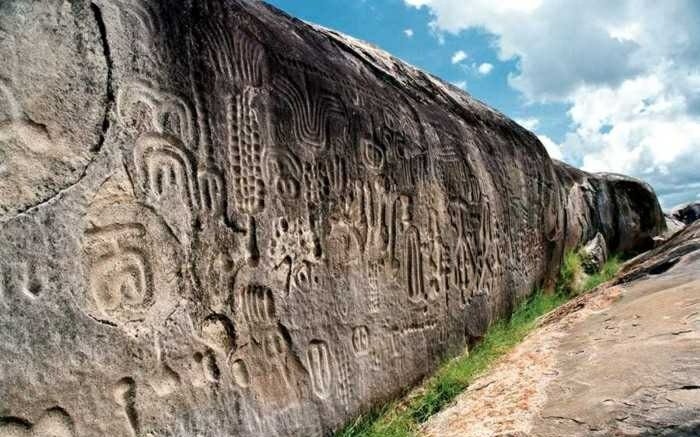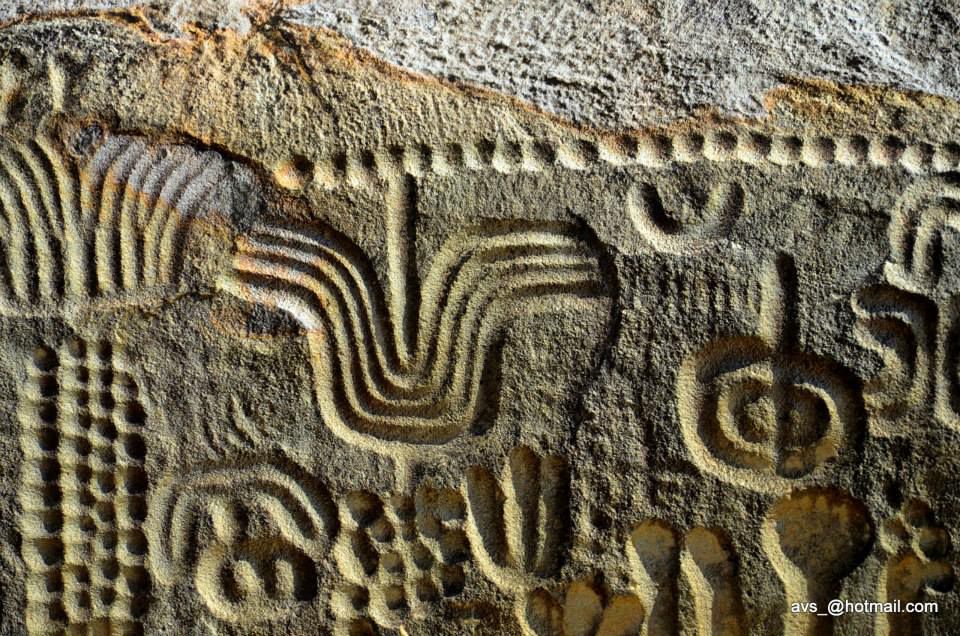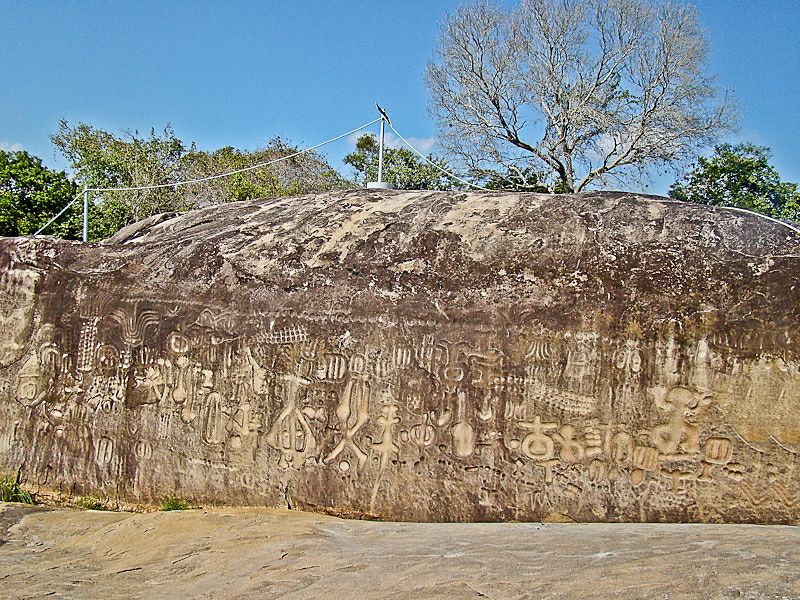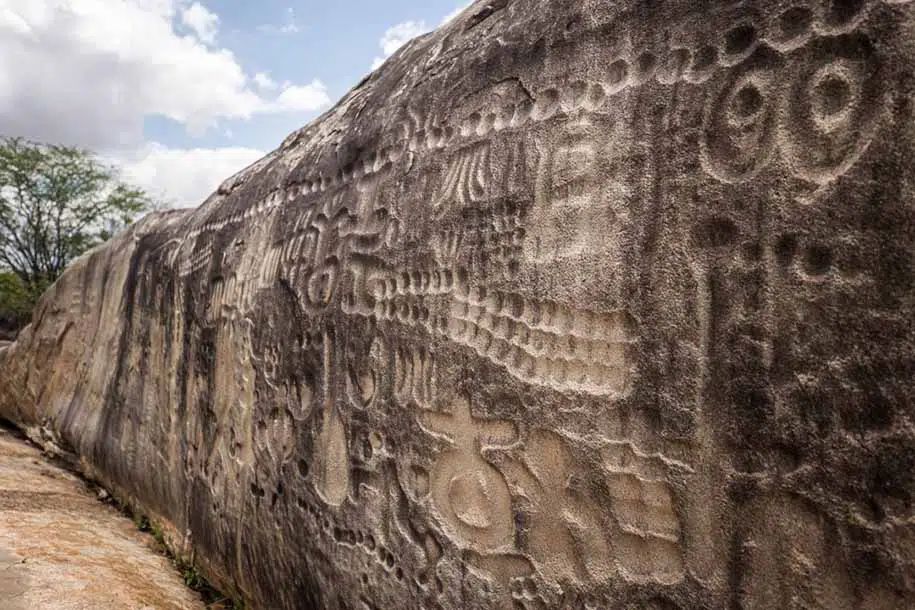THE STONE OF INGA
Located in Brazil, it is a world archaeological wonder. It is over 6000 years old and has hundreds of strange symbols.
Scientists from all over the world have tried to decipher it without success, the only thing known is that it has Egyptian, Phoenician, Sumerian characters also similar to the Easter Island rongorongo and mainly symbols of the Nostratic language, the oldest and rarest of humanity.
In the stone appears the constellation of Orion, the milky way, messages of a world disaster that will come in the future, methods to open mental doors and travel to dimensional worlds, mathematical formulas, equations and many other impressive things.
Who wrote such knowledge in this stone 6 thousand years ago? How is it possible that they knew all this in the past?
Pedra de Ingá is an archaeological monument, identified as “itacoatiara”, consisting of a rocky terrain that has rupestrian inscriptions carved in the rock, located in the Brazilian municipality of Ingá in the state of Paraíba.
The term “itacoatiara” comes from the Tupi language: itá (“stone”) and kûatiara (“scratched” or “painted”). According to tradition, when the Potiguara Indians, who inhabited the region, were asked by European settlers about the meaning of the signs inscribed on the rock, they used this term to refer to them.
The gneiss rock formation covers an area of about 250 m². In its main set, a vertical wall 50 meters long and 3 meters high, and in adjacent areas, there are numerous inscriptions whose meanings are still unknown. Various figures are carved in this set, which suggest the representation of animals, fruits, humans and constellations such as Orion.
The archaeological site is 109 km from João Pessoa and 38 km from Campina Grande. Access to the site is via BR 230, where there is an entrance to PB 90, which, after traveling 4.5 km, leads to the urban center of Ingá. Crossing the city’s main avenue, travel another 5 km on a paved road until you reach the Pedra do Ingá Archaeological Site. There is a support building for visitors and facilities for a Natural History Museum, with various fossils and lithic tools found in the region where the city is located today.
The archaeological site is in an area, once private, which was donated to the Federal Government and later listed as a National Monument by the extinct National Historical and Artistic Heritage Service (now IPHAN), on November 30, 1944.”
Hits: 1





